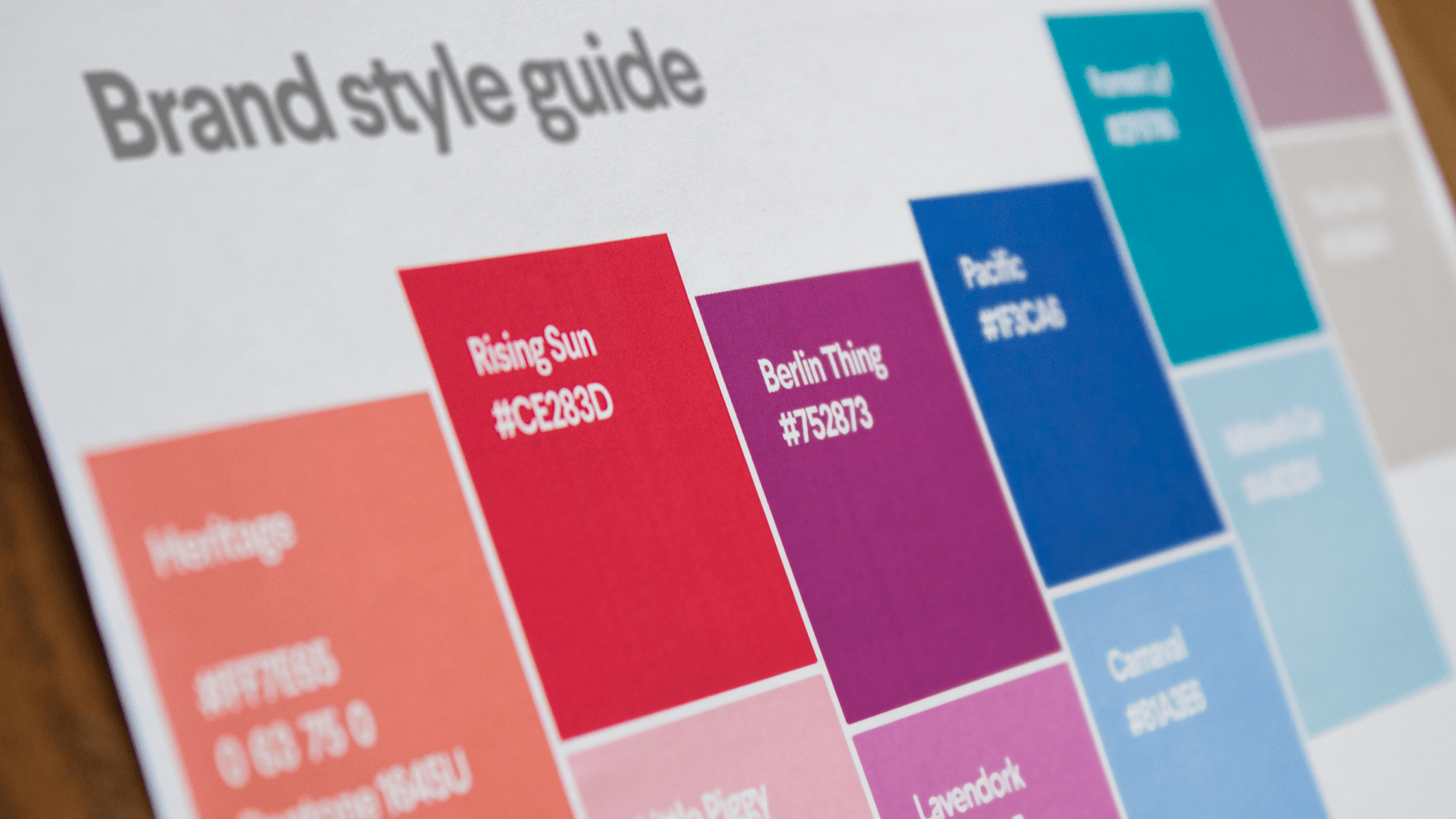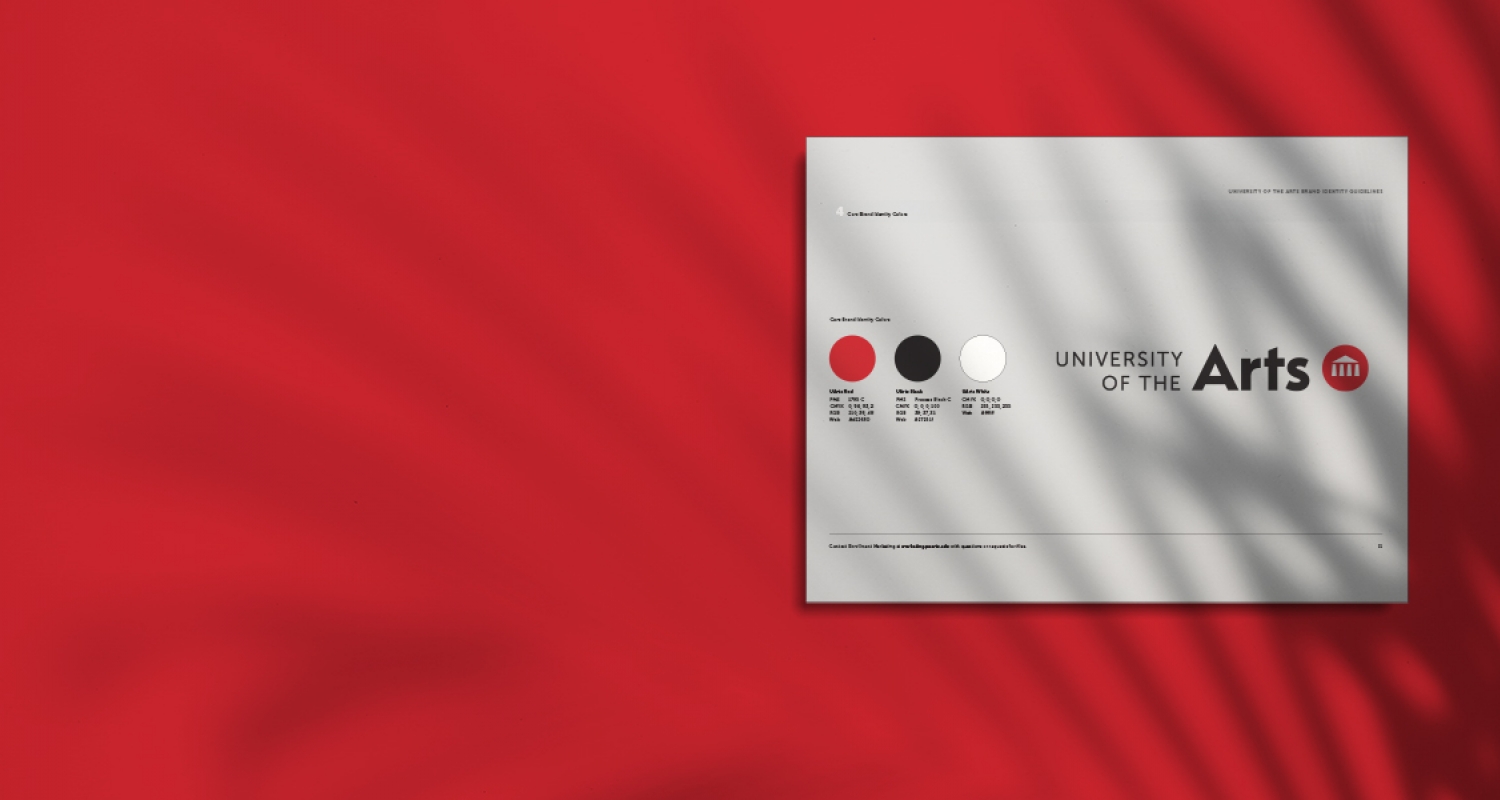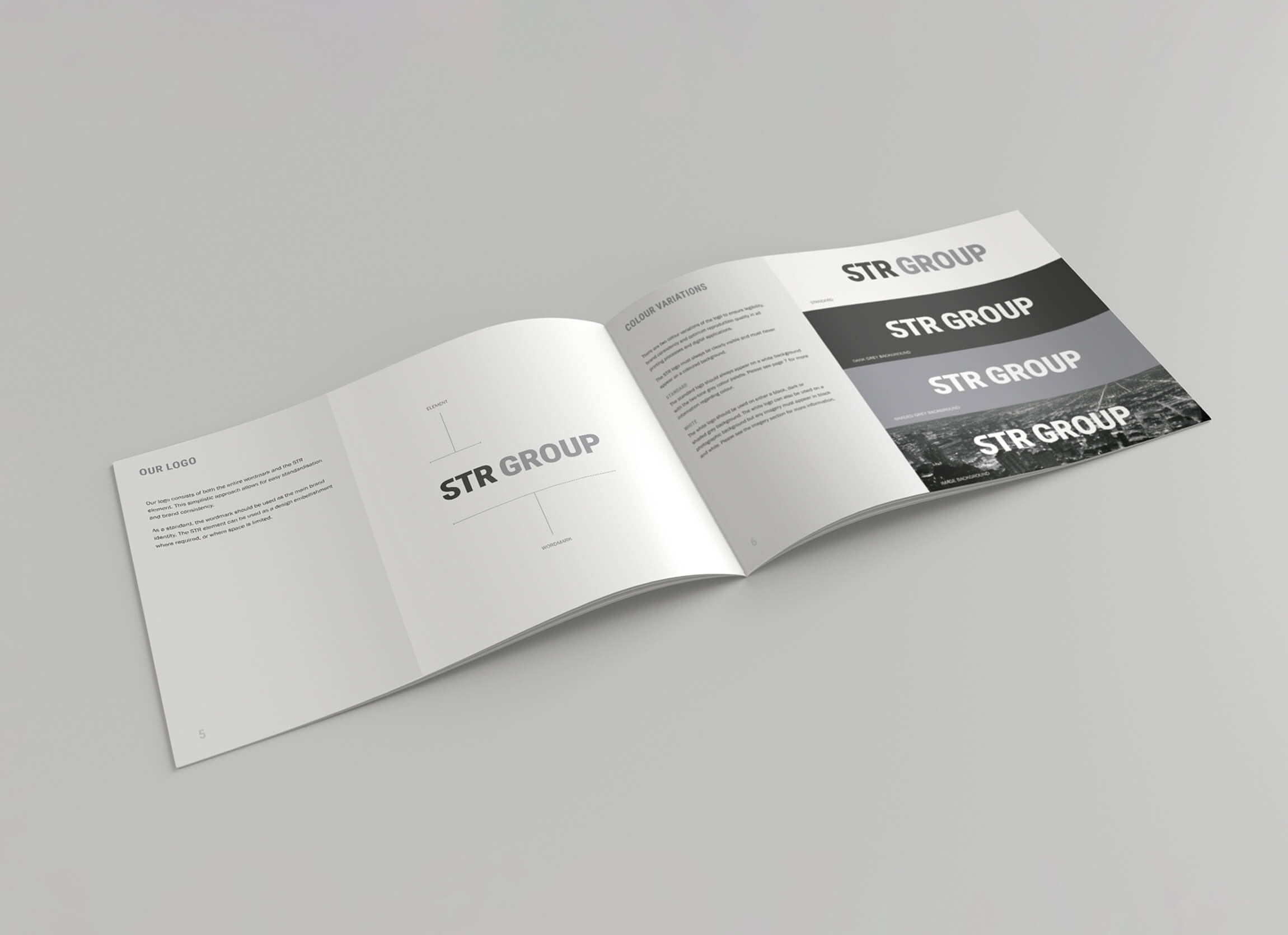What is brand identity guidelines
 Brand design guide, also known as brand guidelines or brand style guide, are a set of rules and instructions that dictate how a brand’s visual and verbal elements should be used consistently across all communication channels. They serve as a reference document for maintaining brand consistency and ensuring that the brand’s identity is conveyed accurately in all brand-related materials.
Brand design guide, also known as brand guidelines or brand style guide, are a set of rules and instructions that dictate how a brand’s visual and verbal elements should be used consistently across all communication channels. They serve as a reference document for maintaining brand consistency and ensuring that the brand’s identity is conveyed accurately in all brand-related materials.
Brand identity guidelines typically include the following elements:
- Brand overview: This section provides an overview of the brand, including its mission, vision, values, and personality.
- Logo usage: This section outlines the correct and incorrect usage of the brand’s logo, including guidelines on logo size, placement, clear space, color variations, and usage on different backgrounds.
- Color palette: This section specifies the brand’s color palette, including primary and secondary colors, as well as guidelines on color usage in different contexts, such as digital and print.
- Typography: This section details the brand’s typography guidelines, including recommended fonts for various applications, font sizes, and styles.
- Imagery and graphics: This section provides guidelines on the use of imagery and graphics, such as photography, illustrations, icons, and other visual elements that are part of the brand’s identity.
- Voice and tone: This section outlines the brand’s preferred tone of voice and writing style for all communications, including guidelines on language, grammar, and messaging.
- Brand applications: This section provides examples and guidelines on how the brand identity should be applied across different touchpoints, such as stationery, signage, packaging, websites, social media, and other marketing materials.
- Brand usage and misuse: This section highlights examples of brand misuse and provides clear instructions on what not to do in order to maintain brand consistency.
- Contact information: This section provides contact information for the brand’s marketing or design team, so that stakeholders can seek clarifications or request brand assets if needed.
Brand identity guidelines are an essential tool for ensuring that a brand’s visual and verbal elements are used consistently, regardless of who is creating brand-related materials. They help establish a cohesive and recognizable brand identity, which in turn strengthens brand awareness, recall, and perception among consumers.
How to brand design
 Branding design is the process of creating visual elements and a consistent identity that represents a brand and communicates its values, personality, and essence to the target audience. Here are some steps to follow when creating a brand design:
Branding design is the process of creating visual elements and a consistent identity that represents a brand and communicates its values, personality, and essence to the target audience. Here are some steps to follow when creating a brand design:
- Define your brand: Start by understanding your brand’s unique attributes, including its purpose, vision, mission, values, target audience, and positioning. This will help you create a brand design that aligns with your brand’s essence.
- Research your competition: Conduct market research to understand your competitors and their branding strategies. This will help you identify gaps and opportunities in the market and ensure that your brand design stands out from the competition.
- Develop a brand strategy: Create a comprehensive brand strategy that outlines the key elements of your brand, including your brand name, logo, color palette, typography, imagery, and tone of voice. Your brand strategy should align with your overall brand positioning and be consistent across all touchpoints.
- Create a logo: Your logo is a crucial visual element of your brand design. It should be simple, memorable, and reflect your brand’s personality and values. Work with a professional designer or design agency to create a logo that encapsulates your brand’s essence and can be used across various applications.
- Choose a color palette and typography: Select a color palette and typography that align with your brand’s personality, values, and target audience. Colors and typography can evoke emotions and convey messages, so choose them thoughtfully to create a consistent visual language for your brand.
- Create brand guidelines: Develop comprehensive brand guidelines that outline the proper use of your brand design elements, including logo usage, color palette, typography, imagery, and tone of voice. Brand guidelines ensure consistency in how your brand is presented across all touchpoints and help maintain a cohesive brand identity.
- Apply brand design across touchpoints: Implement your brand design across all touchpoints where your brand interacts with the audience, including your website, social media profiles, packaging, signage, advertising, and other marketing collateral. Consistency in brand design helps build brand recognition and creates a cohesive brand experience for your audience.
- Monitor and evolve your brand design: Regularly review and monitor your brand design to ensure it remains relevant, resonates with your target audience, and aligns with your brand strategy. As your brand grows and evolves, your brand design may need updates and refinements to stay current and effective.
Remember that branding design is not just about creating a visually appealing logo or color palette, but also about creating a consistent and memorable brand identity that communicates your brand’s essence and resonates with your target audience. It’s important to invest time and effort in developing a thoughtful and strategic brand design that aligns with your brand’s overall strategy and values.
Canva brand guidelines
 Actual branding style guides for Canva may change over time, and it’s always best to refer to Canva’s official brand guidelines for the most up-to-date and accurate information.
Actual branding style guides for Canva may change over time, and it’s always best to refer to Canva’s official brand guidelines for the most up-to-date and accurate information.
Brand Identity:
- Logo: Canva’s official logo, including variations, sizes, clear space requirements, and proper usage. This may include guidelines on color usage, positioning, and minimum size requirements.
- Color Palette: The approved colors for Canva’s brand, including primary and secondary colors, as well as guidelines on color usage in different contexts (e.g., print, digital).
- Typography: The approved fonts and typefaces for Canva’s brand, including guidelines on font sizes, weights, and usage in different contexts (e.g., headings, body text).
Visual Elements:
- Imagery: Guidelines on the types of images that should be used in Canva’s brand materials, including preferred styles, themes, and image sources. This may also include guidelines on image resolution, cropping, and image treatments.
- Icons and Illustrations: Approved iconography and illustrations for Canva’s brand, including usage guidelines, styles, and formats.
Brand Voice and Tone:
- Messaging: Guidelines on the tone of voice, language, and messaging that should be used in Canva’s brand materials. This may include guidelines on brand positioning, key messages, and communication style.
- Writing Style: Guidelines on grammar, punctuation, capitalization, and other writing conventions that should be followed in Canva’s brand materials. This may include tone, voice, and messaging for different types of content, such as website copy, social media posts, and marketing materials.
Usage Guidelines:
- Logo Usage: Guidelines on how to use Canva’s logo in different contexts, such as print materials, digital assets, and social media. This may include rules for logo placement, size, color variations, and clear space requirements.
- Brand Applications: Guidelines on how to apply Canva’s brand elements consistently across different touchpoints, such as websites, social media, advertisements, and packaging. This may include templates, examples, and best practices for brand implementation.
Additional Information:
- Brand History and Background: Background information on Canva’s brand, including its mission, vision, and values. This may also include information on the brand’s history, evolution, and positioning in the market.
- Contact Information: Contact details for Canva’s brand team or designated brand representatives for inquiries or further assistance on brand guidelines.
It’s important to note that brand guidelines are typically comprehensive documents that are intended to maintain consistency and integrity in a brand’s visual and verbal identity. They are typically meant for internal use by Canva’s employees, partners, and authorized stakeholders to ensure that the brand is represented consistently across all touchpoints. If you are planning to use Canva’s brand elements or create materials on behalf of Canva, it’s best to refer to Canva’s official brand guidelines for specific and up-to-date information.
Importance of brand style guide
 Branding style guide is a crucial tool for any organization that aims to build a strong and consistent brand image. It is a set of guidelines that provides instructions on how to use and apply various brand elements consistently across different platforms and communications. The importance of a brand style guide can be summarized as follows:
Branding style guide is a crucial tool for any organization that aims to build a strong and consistent brand image. It is a set of guidelines that provides instructions on how to use and apply various brand elements consistently across different platforms and communications. The importance of a brand style guide can be summarized as follows:
- Consistency: A brand style guide ensures that all brand elements, such as logos, colors, fonts, imagery, tone of voice, and messaging, are used consistently across all brand touchpoints, including websites, social media, print materials, advertisements, and more. This consistency helps to establish a strong brand identity and recognition, which is vital for creating a memorable impression on consumers.
- Brand Integrity: A brand style guide acts as a reference document that defines the correct and approved usage of brand elements. It ensures that the brand is represented accurately and consistently, adhering to the brand’s vision, mission, and values. This protects the brand’s integrity by maintaining a unified and professional appearance, regardless of the medium or channel used to communicate with the audience.
- Efficiency: A brand style guide streamlines the creative process by providing clear instructions and specifications on how to use brand elements. It eliminates the need for constant back-and-forth communication between different teams or agencies, saving time and effort. It also helps new employees or external partners to quickly understand and follow the brand guidelines, ensuring brand consistency across all communications.
- Brand Differentiation: A brand style guide helps an organization to differentiate itself from competitors by defining unique brand elements and guidelines for their usage. This ensures that the brand stands out in a crowded marketplace, creates a memorable impression, and builds brand loyalty among consumers.
- Flexibility: A brand style guide can provide flexibility in terms of allowing for adaptations or modifications of brand elements for different contexts or platforms, while still maintaining brand consistency. This can include variations of the logo, color palette, or typography for different media, such as digital, print, or social media. It provides a framework for creative expression while staying within the brand’s overall guidelines.
In conclusion, branding style guide is a critical tool for organizations to establish and maintain a consistent and cohesive brand image. It ensures brand integrity, promotes brand recognition, enhances efficiency, fosters brand differentiation, and allows for creative flexibility. It serves as a reference document for internal and external stakeholders, guiding them in the correct and consistent usage of brand elements, which ultimately helps build a strong and memorable brand identity.
Brand guide dimensions
 Here general brand style guides and dimensions that are commonly used in brand style guides.
Here general brand style guides and dimensions that are commonly used in brand style guides.
- Logo Dimensions: Brand guidelines typically include specifications for the minimum size, maximum size, and clear space around the logo to maintain its visibility and legibility. These dimensions may vary depending on the specific logo design and its intended use, such as for print or digital media.
- Typography: Brand guidelines often specify the typefaces, font sizes, and styles to be used in various contexts, such as headings, body text, and captions. These specifications help ensure consistency in the brand’s visual identity across different applications.
- Color Palette: Brand guidelines usually include a color palette that defines the brand’s primary and secondary colors, as well as any additional colors that may be used in specific contexts. These colors are typically specified using Pantone, CMYK, RGB, or HEX codes to ensure accurate reproduction in different media.
- Imagery: Brand guidelines may provide guidelines for the use of imagery, including specifications for image size, resolution, and file formats. This can help maintain visual consistency in the use of images across different brand materials.
- Layouts: Brand guidelines may include specifications for layouts, grids, and spacing for various design applications, such as print collateral, digital media, and web design. These guidelines ensure consistency in the visual presentation of brand materials.
- Social Media: Brand guidelines may provide specifications for social media graphics, including profile picture dimensions, header image dimensions, and other graphics used in social media profiles. These specifications help ensure that the brand’s visual identity is consistently applied across different social media platforms.
It’s important to note that brand style guide are specific to each brand and may vary depending on the brand’s design elements, intended use, and visual identity. It’s best to refer to the specific brand guidelines or consult with a brand representative for accurate and up-to-date information on the dimensions and specifications for a particular brand.
Best brand style guides
 Here are some popular and well-regarded brand style guides that have been recognized for their effectiveness and attention to detail:
Here are some popular and well-regarded brand style guides that have been recognized for their effectiveness and attention to detail:
- Google Material Design: Google’s Material Design is a widely recognized and adopted design system that provides comprehensive guidelines for creating consistent and visually appealing user interfaces across various platforms and devices. It includes guidelines for color palettes, typography, layout, icons, motion, and more.
- Airbnb: Airbnb’s brand style guide is known for its clean, minimalist design and extensive documentation of their brand elements, including their logo, color palette, typography, imagery, and tone of voice. It also provides practical examples and applications of their brand across various touchpoints, such as print, digital, and social media.
- Apple Human Interface Guidelines: Apple’s Human Interface Guidelines (HIG) provide detailed instructions for designing user interfaces for iOS, macOS, watchOS, and tvOS platforms. The HIG includes guidelines for interface design, app architecture, navigation, typography, icons, and other design elements, ensuring a consistent and intuitive user experience across Apple devices.
- Adobe: Adobe’s brand style guide is known for its comprehensive coverage of their brand elements, including their logo, color palette, typography, imagery, and iconography. It also includes guidelines for using their brand assets in various contexts, such as print, digital, and social media, as well as examples of how to use their brand in different applications.
- IBM Design Language: IBM’s Design Language is a design system that encompasses their visual and verbal brand elements. It includes guidelines for typography, color, imagery, iconography, and tone of voice, as well as guidance on accessibility and inclusivity in design. IBM’s Design Language focuses on simplicity, consistency, and user-centric design principles.
It’s important to note that brand guide can evolves over time as brands update their visual identity or messaging. Therefore, it’s always recommended to refer to the most up-to-date brand style guide provided by the brand itself for accurate and current guidelines.
FAQs – Your Burning Questions Answered
How Do I Begin the Brand Design Process?
Embarking on a brand design journey starts with understanding your brand’s essence. Identify core values, target audience, and desired brand personality.
Is Professional Help Necessary for Brand Design?
While DIY is an option, professional designers bring expertise and industry knowledge, ensuring a polished and effective brand representation.
What Role Does Storytelling Play in Branding?
Storytelling humanizes your brand, making it relatable. Craft a compelling brand story that resonates with your audience on a personal level.
How Often Should I Update My Brand Design?
Regular assessments are vital. Update when your brand’s essence evolves or when your visual identity no longer aligns with your target audience.
Can I Use Multiple Colors in My Brand Palette?
While possible, exercise caution. A well-thought-out color palette ensures harmony and coherence, enhancing brand recognition.
What Makes a Timeless Logo Design?
Simplicity, versatility, and relevance stand the test of time. Aim for a logo that remains impactful across changing trends.
Conclusion
In the dynamic business landscape, a thoughtfully crafted brand design is your anchor. This Brand Design Guide empowers you to navigate the nuances, fostering a brand that not only survives but thrives. Embrace the art and science of brand design to leave an enduring mark on your audience.

